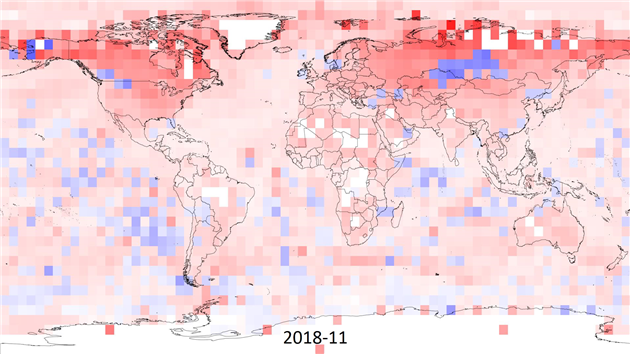How to Save a Planet (with an Infiniti QX55)

I've been meaning to check out the new Gimlet/Spotify podcast, How to Save a Planet, and finally listened to the first episode about wind power last week.
It was sponsored by the Infiniti QX55.
This is not even a hybrid. It's a 268 horsepower SUV. Consumer Reports says:
"The company cited 26 mpg combined (city and highway) when the QX50 was introduced for 2019. We measured just 22 mpg overall in our tests, putting it on par with larger, more powerful SUVs. And it required premium fuel. Subsequently, the official EPA estimate was downgraded to 25 mpg."
It's not even a particularly efficient SUV. You are really unlikely to be saving a planet this way. I'm not sure I can bear to find out who sponsors the second episode. I'm imagining a subscription panda steak service or bitcoin.
I shouldn't throw stones. I bought into a Volkswagen clean diesel (which came with a green tax credit before they got busted). I currently drive a Land Rover that can only hit it's claimed mpg if the engine stop technology is working. That only happens for about twelve miles after it has been serviced, which feels like the same sort of scam as the Volkswagen frankly.
Or maybe the clue is in the indefinite article and they read my post about extreme environmentalism.
Related Posts
You Might Also Like
(Published to the Fediverse as: How to Save a Planet (with an Infiniti QX55) #etc #climatechange #environmentalism #podcast You're not really helping to save the planet if you're helping Infinity to sell more QX55's. )
Global Temperature Anomalies Animation, 1850 to 2018
I made this animation to visualize climate change based on the HadCRUT 4 data (specifically the ensemble median gridded data) from the Met Office Hadley Centre.
HadCRUT 4 provides temperature anomalies in a five degree grid by month and year from January 1850 to November 2018 (as of this post). Anomaly here means deviation from the 1961-1990 average.
In the animation I wanted to capture the full timespan of the data but also show long term trends. Each frame is a month of data and each five degree grid of longitude and latitude is colored based on the maximum cumulative anomaly (positive or negative) for each decade. The range for color is 0 to +/- 20.85 degrees, red for warmer and blue for cooler. This means there is a reset at the start of each decade, the first few years are mostly random noise but by the end of each decade you're seeing the range of extremes.
Spoiler alert - you can spot something happening in the last three decades.
As well as the change in temperature it's interesting to watch the increase in global coverage over time. It's surprising that even the most recent years have no readings for Antarctica. Here's a paper (PDF) discussing the impact of the missing data. The HadCRUT 4 FAQ has more detail on how the temperature anomalies were assembled.
Related Posts
- Animation of a year of Global Cloud Cover
- Daily Average Global Cloud Cover Animation
- Global Cloud Cover 48 Hour Video Updated Hourly
You Might Also Like
- Worst special TiVo offer ever
- Comparing the Atmosphere to the Population of the United States
- Autumnal Equinox 2021
(Published to the Fediverse as: Global Temperature Anomalies Animation, 1850 to 2018 #timelapse #animation #climatechange #environmentalism #video Animation of maximum cumulative temperature anomaly by decade from January 1850 to November 2018 based on the HadCRUT 4 data set. )
Extreme Environmentalism
Speaking of Gaia, I read Michael Lind’s Why we should embrace the end of human spaceflight on Salon yesterday with horror. He marshals a bunch of straw man arguments against humans in space, the worst of which is dismissing the threat of a planetary catastrophe:
“A sufficiently large asteroid or comet impact like the one that caused the extinction of the dinosaurs could do the job. But if a massive bolide threatened the Earth, we would send unmanned spacecraft, not Robert Duvall or Bruce Willis, to steer it away or destroy it.”
That’s a little complacent. Even if we ever get perfect asteroid defenses cracked you’ve still got to worry about cosmic strings, strangelets, radiation storms, Von Neumann probes, DNA hackers, the Yellowstone super volcano and anything shown on a Saturday afternoon on SyFi. All of our eggs are very much in one planetary basket.
Take the Gaia hypothesis to its ultimate conclusion: if the planet is a super-organism then humanity is the reproductive system. We’re the best bet to spread life beyond Earth and ensure its continued survival. The asteroid scenario may trigger panspermia but that would be for a lucky few bacteria, not Homo sapiens sapiens.
Colonizing space is difficult, expensive and for most people unappealing. But stop thinking about the planet you’re leaving to your children and start thinking about the universe you’re leaving to whatever our DNA based planetary ecosystem may evolve into.
A real environmentalist would focus on making this planet uninhabitable so we escape before it’s too late.
;)
Related Posts
- Fermi Suicide
- Can I move to a Better Simulation Please?
- Republicans and Democrats: Too big to succeed
You Might Also Like
(Published to the Fediverse as: Extreme Environmentalism #etc #gaia #environmentalism #dna #vonneumann #syfi #yellowstone #radiation #panspermia #space A real environmentalist would focus on making this planet uninhabitable so we escape before it’s too late. )

